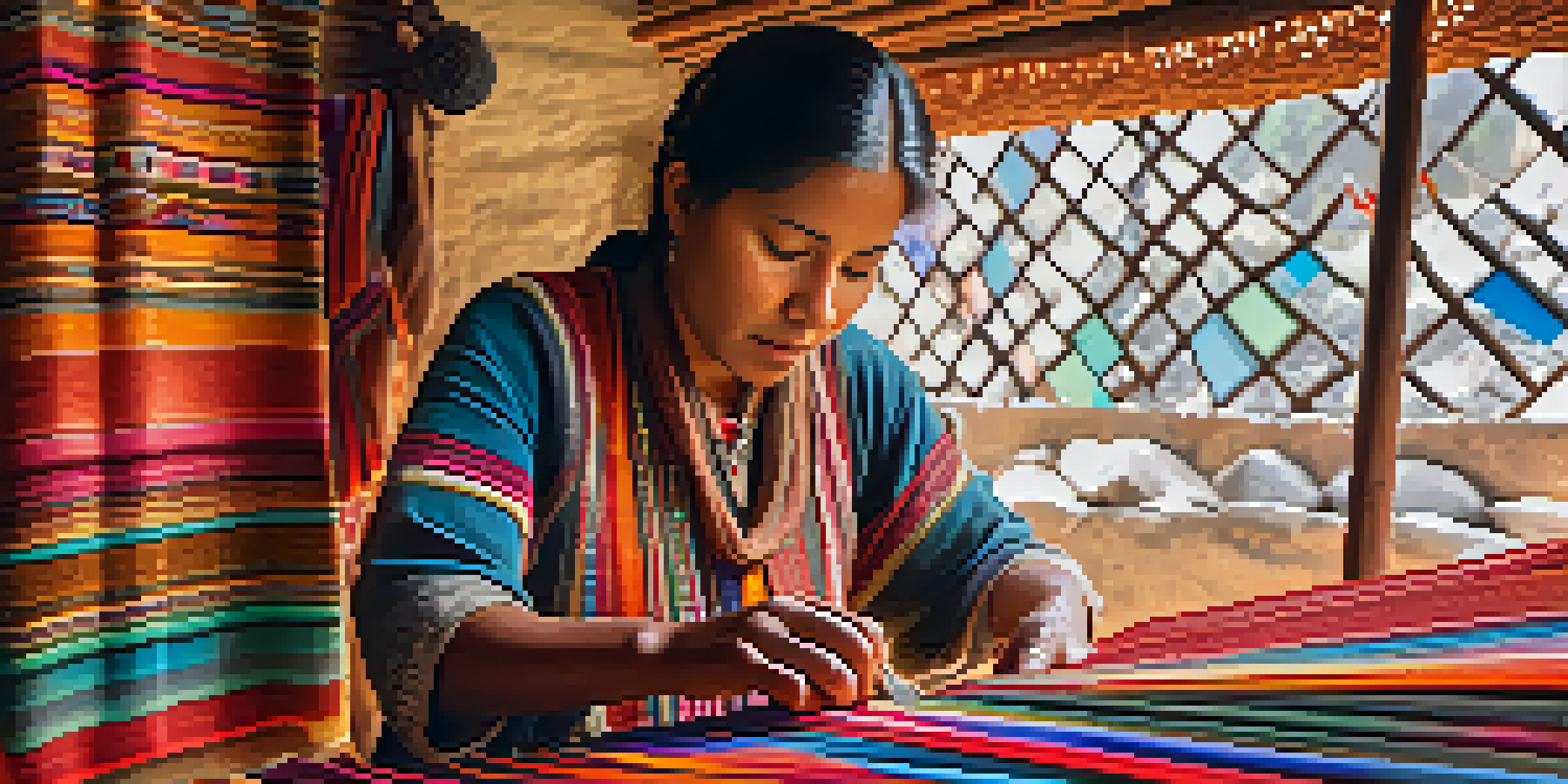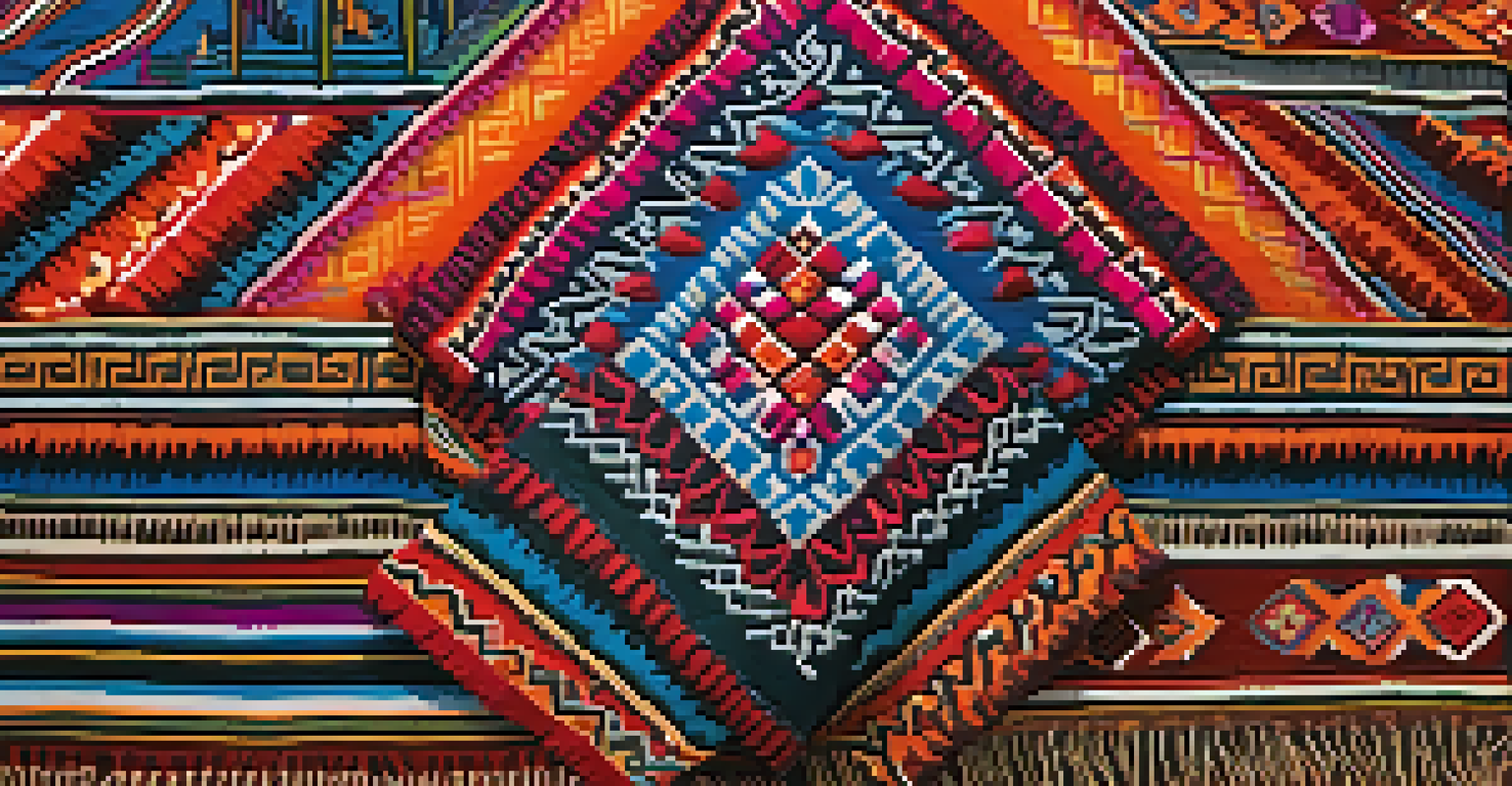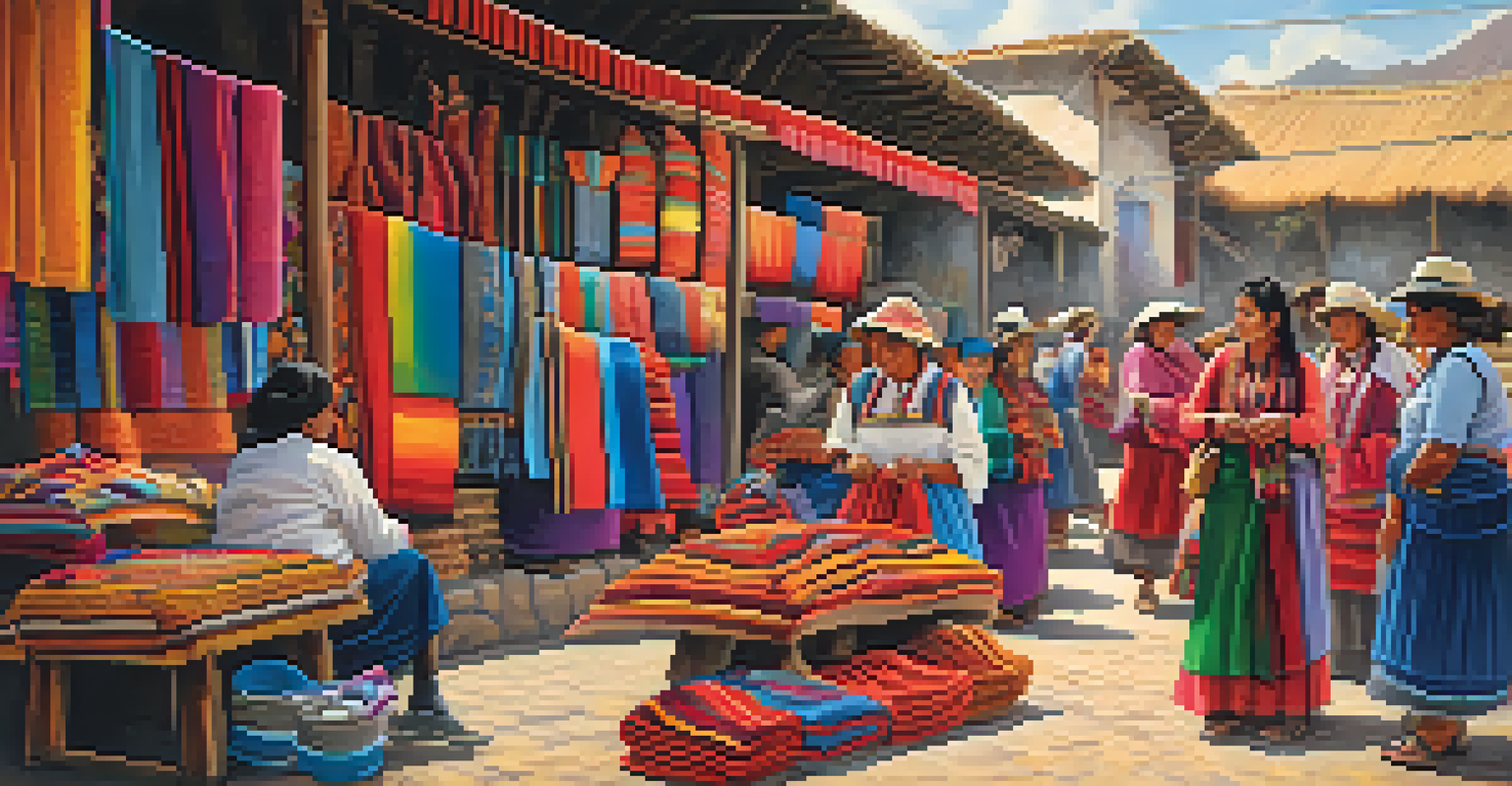The Evolution of Textile Art in Peru: A Cultural Journey

The Origins of Textile Art in Ancient Peru
Textile art in Peru has deep roots that trace back to ancient civilizations, such as the Paracas and Nazca cultures. These early artisans utilized natural fibers, including cotton and alpaca wool, to create intricate fabrics that served both practical and ceremonial purposes. The use of vibrant dyes derived from plants and minerals added to the visual richness of their textiles, showcasing their creativity and cultural significance.
Textiles are a reflection of culture, identity, and history, woven into the very fabric of society.
As these societies evolved, so did their textile techniques. The introduction of weaving methods, such as tapestry and backstrap weaving, enabled artisans to produce more complex patterns and designs. This innovation was not merely for aesthetics; textiles often conveyed stories, beliefs, and social status, making them a crucial aspect of daily life and rituals.
The legacy of these ancient techniques continues to influence modern Peruvian textile art. Today, we can still see echoes of these early practices in the works of contemporary artisans, who honor their ancestors by keeping these traditions alive while infusing their creations with new ideas and styles.
The Role of Textiles in Incan Society
The Incas, one of the most powerful empires in South America, placed immense importance on textiles. They viewed textiles as symbols of wealth and status, with specific colors and patterns signifying different social classes. Incan textiles were not just functional items; they were often considered a form of currency, used in trade and as offerings to the gods.

The Incan Empire also established a centralized system for textile production, with state-run workshops employing skilled artisans. This allowed for more standardized and high-quality textiles, which were essential for maintaining the empire's economic and political stability. The intricate designs often depicted scenes of nature, mythology, and daily life, serving as a historical record of the culture.
Textiles Reflect Cultural Heritage
Peruvian textiles serve as vital symbols of identity, history, and status, showcasing the rich cultural narratives of ancient civilizations and the Incan Empire.
Through these textiles, the Incas communicated their values and beliefs, making them a vital part of their cultural identity. Even today, many of these designs inspire modern textile artists in Peru, reminding us of the rich heritage that continues to thrive.
The Influence of Spanish Colonialism
When the Spanish arrived in the 16th century, they brought with them new materials and techniques that significantly impacted Peruvian textile art. Wool from European sheep was introduced, which blended with traditional fibers like alpaca and llama wool, expanding the variety of textiles available. This fusion allowed artisans to experiment with new patterns and styles, enriching the textile landscape.
Art is a way of survival. It is a way for us to maintain our identity and our culture.
However, colonialism also brought challenges. Indigenous artisans faced pressure to adapt their traditional practices to meet European tastes. Many were forced to abandon their ancestral techniques, leading to a loss of cultural identity for some communities. Yet, in response, many artisans adapted rather than abandoned their traditions, creating a unique blend of indigenous and European styles that still resonates today.
This period of adaptation and resilience is a testament to the strength of Peruvian culture. The textiles that emerged during colonial times reflect a rich tapestry of influences, showcasing the ability of artisans to innovate while honoring their roots.
Revival and Preservation of Traditional Techniques
In the late 20th century, there was a resurgence of interest in traditional Peruvian textile art as artisans and cultural advocates sought to preserve ancestral techniques. This movement was fueled by a growing appreciation for handmade crafts and the unique stories behind them. Many communities began reviving ancient weaving methods, ensuring that these practices were not lost to history.
Organizations and cooperatives emerged to support artisans, providing training and resources to help them improve their skills and market their products. This revival not only empowered artisans economically but also fostered a renewed sense of cultural pride in their heritage. The textiles produced during this time often blend traditional designs with contemporary aesthetics, appealing to both local and global markets.
Colonialism Blended Traditions
The arrival of Spanish colonizers introduced new materials and techniques that influenced indigenous textile art, leading to a unique fusion of styles while challenging traditional practices.
Today, we see a vibrant textile scene in Peru, where traditional and modern influences coexist. Artisans continue to push the boundaries of creativity while honoring the time-honored techniques that have shaped their culture for generations.
The Global Impact of Peruvian Textiles
Peruvian textiles have gained international recognition, with their intricate designs and rich colors captivating audiences around the world. This global interest has opened up new markets for artisans, allowing them to showcase their work beyond local communities. As a result, more people are becoming aware of the cultural significance of these textiles, leading to a greater appreciation for the artistry involved.
The rise of ethical fashion has also played a role in promoting Peruvian textiles on the global stage. Many consumers are seeking out handmade products that support sustainable practices and fair trade. Artisans have embraced this opportunity, sharing their stories and the cultural heritage behind their work, which resonates with conscious consumers looking for meaningful purchases.
By connecting the past with the present, Peruvian textile artisans are not only preserving their heritage but also redefining it for a global audience. This cultural exchange enriches both the artisans and those who appreciate their work, creating a tapestry of shared experiences and understanding.
The Role of Women in Textile Art
Women have played a crucial role in the evolution of textile art in Peru, serving as the primary weavers and custodians of traditional techniques. For centuries, they have passed down their knowledge from generation to generation, ensuring that these skills continue to thrive. This deep-rooted connection to their craft empowers women and fosters a sense of community among artisans.
In many indigenous cultures, weaving is considered a form of storytelling, with each pattern and color representing specific meanings and histories. Women weave not only for economic reasons but also as a way to express their identity and cultural heritage. This artistic expression allows them to reclaim their narratives and assert their place within their communities.
Women Empowered Through Weaving
Women have historically been the primary weavers in Peru, preserving and passing down traditional techniques while gaining economic independence and community recognition.
As the global demand for handmade textiles grows, women artisans are finding new opportunities to showcase their work and gain recognition. This shift not only enhances their economic independence but also elevates their status within their communities, highlighting the essential role they play in preserving Peru's rich textile heritage.
The Future of Textile Art in Peru
Looking ahead, the future of textile art in Peru appears bright, blending tradition with innovation. Young artisans are increasingly exploring new techniques and materials while remaining connected to their cultural roots. This dynamic interplay is allowing for the creation of unique pieces that resonate with both local and international audiences.
As technology advances, many artisans are also utilizing online platforms to reach wider markets, sharing their stories and showcasing their creations. This digital presence not only helps promote their work but also fosters a deeper connection between consumers and the artisans behind the textiles. The rise of social media has enabled a vibrant community of textile enthusiasts to emerge, celebrating the beauty and significance of Peruvian art.

Ultimately, the evolution of textile art in Peru is a testament to the resilience and creativity of its people. As artisans continue to adapt and innovate, they ensure that this cultural heritage will thrive for generations to come, weaving new stories into the rich tapestry of Peru's artistic legacy.